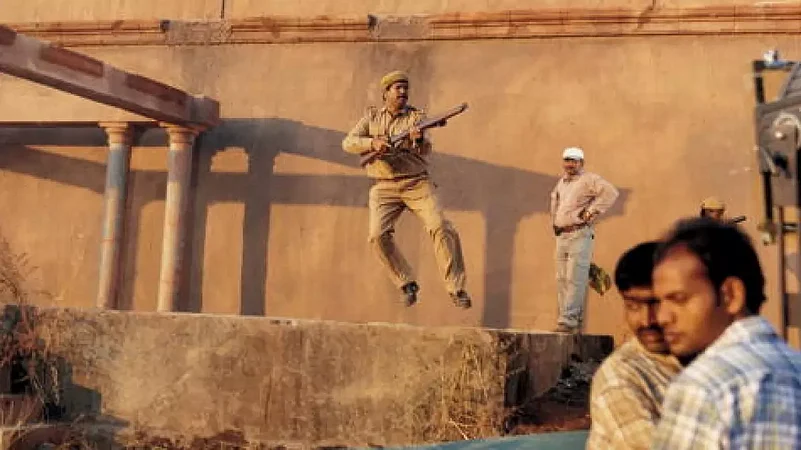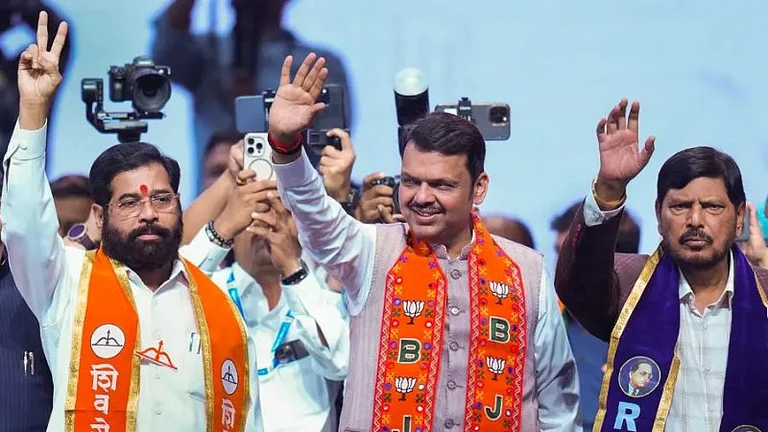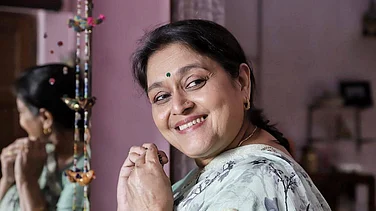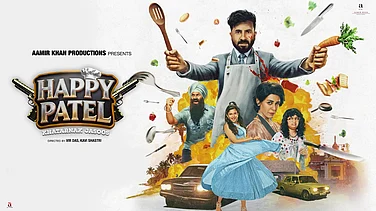English language uses the word extra as an adjective, a noun, or an adverb. When listing out its multiple usages as a noun, dictionaries indicate a meaning that is central to film and media production cultures. This definition is “an additional worker specifically one hired to act in a group scene in a motion picture, television or a stage production.” Synonyms used for extras include: ‘junior artists’, ‘atmosphere’, ‘background actors/talent/performers/artists/cast members,’ or simply ‘background’. Below-the-line cast placed a rung above the extra, but well below the lead actors, ranges from actors performing minor roles to those who are principal players pivotal to a narrative. Sometimes addressed as supporting or character actors, or actors with bit parts, or side heroes (in filmi Bambaiya), their stock roles are often playing family members, best friends, love interests, sidekicks and even antagonists. The extra has nonspeaking parts while the below-the-line cast will have a few lines of dialogue, or more, depending on the significance of the character.

The semantics of these words—extras and below-the line-cast—signify meanings that are secondary and subordinate, at best, and imply inessential and superfluous, at worst. Given that language itself has fixed this labor to denote an ancillary function, global media industries, too, have taken the cue to not acknowledge this essential labor. The extras and below-the-line cast, located at the edges of the film industry and the film culture, are thus sorely lacking in representation within film and media histories. Bombay cinema’s historical trajectory, too, has scarcely credited the uncredited, treating the extra as extraneous.
Kaagaz Ke Phool/Paper Flowers (1959)
India’s first CinemaScope film, Guru Dutt’s Kaagaz Ke Phool endeavored to foreground the extra narratively and representationally. The film renders the descent of Suresh Sinha (Guru Dutt) from an idolized filmmaker to a superfluous extra within the Ajanta Pictures production house. The audience is introduced to Sinha as a dynamic filmmaker, arriving at a sound studio, twenty-five minutes into the narrative. This crucial sequence foregrounds two scenes that explicitly addresses the extra in their absence and presence, respectively.
First, we witness a production manager Guptaji hollering at an underling, “Musa, have you brought an extra or a roadside beggar? If Mr. Sinha gets angry with me, you’re through.” The yelling is interrupted by Sinha’s arrival on the sets. Guptaji greets the director with a confident “Good morning boss,” Musa mumbles “Salaam Sahib,” and the chief lighting technician articulates more equally, “Hi boss.” Through the greetings rendered to Sinha, a whole hierarchy of film production labor is mapped in which the extra, ultimately, remains invisible and superfluous.
In the following scene, a mid-long shot introduces us to Musa shouting at a woman, situated on the screen left corner at the margins of the frame. This unnamed woman’s back faces the audience as she nurses a baby with a young child flanking her on the right. The woman is imperceptible with the composition deliberately reducing her to the periphery. Musa aggressively inquires, “Hey, all extras are on the sets. Why are you stuck here?” The woman quickly gets up, passes the infant to her older child, and says, “I will go right away Master ji,” and attempts to proceed. Musa impedes rather belligerently, “Why didn’t you go to the sets earlier?” The emaciated woman explains that since the baby was wailing with hunger she decided to (breast)feed. Musa retorts, “If you are so preoccupied with your baby, why have you come to work (as an extra)?” Sinha overhears and intervenes with kindness directing the woman to not hurry and to report on the sets after putting the baby to sleep. Here the extra is visible, albeit indiscernibly, till a humane attitude acknowledges her presence and labor.
The narrative purpose is twofold. First, to establish the central protagonist as a discerning and empathetic filmmaker who has not sacrificed his humanity at the altar of the apathetic film industry. Second, to foreground the plight of the extra, essential to the film’s narrative arc as Sinha’s ascendant trajectory gradually descends to the role of an extra, by the end of the film. Sinha as an aging and impoverished extra, is treated with much disdain, and dies alone in the director’s chair on the sound stage, bringing the story a full circle. Dutt’s trenchant choice to introduce the star-director Sinha, on the sets of Ajanta Pictures, via two scenes that spotlight the extra, is definitively telling. Guru Dutt’s last film, accredited to him as a director, is widely regarded as an autobiographical contemplation of his deepening disillusionment with the post-independent Bombay film industry.
Khamosh/Silent (1985)
If the sentimental irony of Guru Dutt’s late 1950s cinema, a decade after the euphoria of Indian independence is fueled by the crumbling postcolonial optimism; twenty-five years later, in Vidhu Vinod Chopra’s Khamosh, the cinematic vision has darkened considerably. The narrative revolves around the shoot of a fictional film Aakhri Khoon, a production of Dayal Films International, being filmed in Pahalgam. Soni (Soni Razdan) performs a bit role, as Zubeida, with aspirations of becoming a leading lady in Dayal’s next production Shakuntala. The screenplay requires Zubeida to commit suicide, by hanging, eventually tweaked to stage a murder. Leela Bahl (Sushma Seth), who has “been an extra all her life,” as characterized by the film’s screenwriter, also aspires for her daughter Meenu (Noni Ganguly) a high schooler, to be cast as a heroine in Shakuntala.
In the film’s seventeenth minute Soni is murdered, and through her life and death, we witness the gendered exploitation of the below-the-line cast. We experience Soni’s initial distress, in hanging by a noose from a tree to stage a suicide, as the shoot lingers on its twenty second take. We see a spectrum of predatory men—the lead actor, the cameraperson, the producer, and the producer’s younger brother—flock around Soni bearing uninvited romantic or sexual overtures. The narrative also illuminates Meenu’s exploitation through the shoot of a rape scene, in twelve takes, in which the actor Dilavar (Avtar Gill) is encouraged to tear Meenu’s clothes and molest her to amplify the salaciousness and salability of the rape sequence. Chopra restrains from showing the sordidness by panning on the reaction shots of the crew involved in the shoot—from the director to the cameraperson, to the camera assistant, to the producer, to the screenplay writer, to the sound recordist, and to the production assistants—all male crew members. The film evokes the sleazy torment of the young below-the-line female cast through sound. It is the female lead Shabana (Shabana Azmi) who defiantly calls for a cut ending the audience’s aural misery. Khamosh deconstructs the 1980s production cultures, where mainstream films staged elaborate rape sequences in the prevailing rape-revenge genre, by foregrounding the gendered exploitation of below-the-line cast in these settings.
Rangeela/Colourful (1995)
A decade later, Ram Gopal Varma’s Rangeela has the audacity to focalize the extra as the female protagonist Mili Joshi (Urmila Matondkar). Like Hrishikesh Mukherjee’s Mili (1975), Varma’s Mili remains the vivacious middle-class girl next door. But two decades after Mukherjee’s film, she is now an aspiring actress who is part of choreographer Saroj Khan’s (Saroj Khan) dance troupe and performs ‘background’ dances. Through Mili’s first scene at her workplace, Varma accentuates the star-extra hierarchy. At nine am, below-the-line cast and crew arrive on the sets and busy themselves rehearsing, while the female lead Gulbadan (Shefali Shah) saunters in at noon, chaperoned by her mother (Shammi), to stage a volley of star tantrums. During the first shot, Gulbadan sprains her ankle and abandons the shoot, leaving the remaining cast and crew, high and dry.
One third into the narrative, the male lead of the film Raj Kamal (Jackie Shroff) is jogging and stumbles upon Mili practicing her dance routine at the beach. Raj Kamal is transfixed by Mili’s energetic and fluid dance movements. When Mili catches him staring, she surprisingly inquires, “Kamalji?” The star is startled by this intimate recognition, given the honorific, and mumbles “Who are you?” The extra replies “Me?! I’m Mili. I see you every day at the studio. I’m a dancer for Saroj Khan’s troupe.” Raj Kamal is dazed at this revelation and is in a stupor at his own inability to have noticed Mili. The paradox of this scene is that while the extra is familiar with the star as a co-worker, the star is oblivious of the extra’s existence.
Following a narrative twist, Mili is chosen to play the lead in Raj Kamal’s next film. As she charts the path of stardom, her buddy Munna (Aamir Khan), a seller of movie tickets in the black market, slowly dwindles out of focus. While Mili continues to ascend the star orbit, Munna descends to connote the superfluous, the extra. As Mili increasingly accompanies the star Raj Kamal, Munna’s presence in Mili’s life, gradually fades out. The star becomes extraordinary by leaving the ordinary behind. Rangeela maps Mili’s ascendant trajectory in an opposite arc to Kaagaz Ke Phool’s Suresh Sinha’s descendant trajectory, and yet both films remain sharply critical of the star-extra hierarchy.
Om Shanti Om (2007)
Farah Khan’s Om Shanti Om has been analyzed varyingly as a parody, pastiche, and a reflexive postmodern historical tribute to Bombay cinema’s mainstream production cultures. The compelling aspect that has received scant attention is how Khan brings the insider’s knowledge to map the networks of nameless and faceless labor that fuels the Bombay film industry. Khan adroitly exploits both the content and form of Bombay melodrama to mount a reincarnation narrative. In 1977, the central protagonist Om Prakash Makhija (Shah Rukh Khan/SRK), a junior artist laboring in bit roles and as an extra, smitten by the star Shantipriya (Deepika Padukone), is killed while trying to rescue her from the machinations of a powerful producer, Mukesh Mehra (Arjun Rampal). Om, who dies dreaming of stardom, is the son of junior artists Bela Makhija (Kirron Kher) and the unnamed father, whose photographs playing bit parts, adorn the walls of Om’s shanty home. In a post-interval narrative twist, Om Prakash is reborn in the palatial home of the 1970s reigning star Rajesh Kapoor (Javed Sheikh), to grow up and become the film star Om Kapoor/OK (SRK), working in contemporary Bollywood.
The film opens with the camera tracking forward into the grandiose RC Studios. We first pass troupes of extra walking around in cabaret costumes sporting magenta feathers; and girls wearing pleated white skirts swinging badminton racquets. Farah Khan evokes these extra troupes, recurringly through the film, staging a nostalgic retro nod to the history of extras in Bombay cinema. The camera then swerves to enter the shoot of Subhash Ghai’s film Karz (1980), where the star Rishi Kapoor performing the Om Shanti Om song onstage, tosses his jacket at the crowd of extras playing the audience at his concert. Om Prakash enthusiastically latches on to the costume, wrapped in the star’s aura, and tries to sneak away but is caught by the costumes manager (Masood Akhtar). The manager rudely calls out, “Hey, hero! Is that your father’s jacket? Why are you sneaking out with it?” Om is insulted and retorts, “Don’t drag my father into this Dress Kaka!” Pat comes the reply, “As if Raj Kapoor is your father and he will come and stall the filming. Take off the jacket.” Dress Kaka seals the spat with, “Arre Bhaiya, no one becomes a hero by just wearing a jacket. You need a great personality too!... God, all sorts come crawling to become a hero.”
Farah Khan mounts her central dramatic irony through this opening scene and the rest of the narrative. She makes it explicit that Om cannot actualize his aspirational stardom, except through death and reincarnation as a star son, an acerbic critique of Bollywood stardom as class-based ancestry and dynastic. Also, the film slyly mounts the reigning superstar, SRK, as the junior artist, and the debut female lead, Deepika Padukone, as a superstar in the first half of the film. This inversion is set right in the second half where SRK plays OK, an adored heartthrob, and the debut starlet Padukone plays an aspiring newcomer.
Through the first half of the narrative the sprawling premises of the RC studio reveals a range of labor that goes into the making of a mainstream Bombay film: cinematographers, camera attendants, spot boys, lighting crew, equipment managers, stunt coordinators, makeup artists, costume managers, personnel in the star entourage, and an ambit of performers such as extras, junior artists, dancers, aspiring actors, and stars. The film also mounts multiple spaces that map the hierarchy of the production cultures: designated individual makeup tent for stars and collective ones sporting the sign ‘junior artist’; private swanky makeup rooms for stars; unkempt rooms for housing costumes and property; state-of-the-art editing rooms, projection rooms, and sound studios. It is within these massive premises that Om and his best friend Pappu (Shreyas Talpade) perform a range of bit roles as dacoits and as dancers.
During the shoot of Mukesh Mehra’s production of Maa Bharati, the female lead Shantipriya gets caught in a fire, evoking Bombay cinema’s legendary historical anecdote when Nargis gets caught in the fire during the shoot of Mehboob Khan’s Mother India (1957). The hero Ricky Sandhu (Raman) refuses to jump in the fire to save Shantipriya’s character, as scripted, and looming flames begin to close in on the actress. It is the junior artist Om who heroically jumps into the fire to save the star in turn risking his own life and scalding himself. Shanti, the moral center of the narrative, acknowledges this explicitly, “Who says you are just a junior artist? You jumped in the fire for me, Om! You are a hero.”
In the second half of the narrative, Om Prakash reborn as the superstar Om Kapoor/OK, is established as a spoilt brat, who casually arrives on sets four hours late, doesn’t believe in retakes, and mistreats the crew and his staff. The characterization of the star has been set up to not only lack ethics, and empathy, but also talent. At an award ceremony, we witness a montage of OK’s nominations, predictable roles clearly pitched to lack any defining acting abilities. In other nomination montages too, the star economy appears to be sustained by predictability, marketing, and production house franchises. OK’s moment of reckoning arrives when making a speech, after accepting a major film award, he begins to mouth the fantasy speech of the junior artist Om Prakash. In the award’s after-party, OK questions his father about his possibility of acquiring fame, stardom, and awards, had he not been Rajesh Kapoor’s son. The star’s moral redemption comes from reconnecting with his past life and humble origins as a struggling junior artist.
Om Shanti Om’s final credit brings to us the names and faces of a dizzying density of workers involved in the making of the film—character actors, music directors, director of photography, art director, editor, sound designer, dialogue writer, screenplay writers, executive producer, action directors, costume designers, costume executors, background score artist, visual effects artists, hair and makeup artists, publicity designers, music producers, sound re-recordist, music arrangers, accounts and finance personnel, production department personnel, assistant directors, costume assistants, still photographers, assistant art directors, associate choreographers, setting department personnel, camera department personnel, light men, dress men, camera attendants, sound department personnel, junior artist coordinators, spot boys, and grip department personnel—beyond its well-recognized stars, actors, producer and director.
From the beginning to the end of the film, the director Farah Khan, rigorously reaffirms her narrative and moral affinity with those whose labor goes unacknowledged in the annals of the Bombay film industry. Farah Khan is the daughter of Kamran Khan, a stuntman-turned-filmmaker who died a penniless film producer, and Menaka Irani, whose sisters Honey Irani and Daisy Irani, were prominent child actors. She began working in Bollywood as a choreographer. Thus, she brings to the film an insider’s knowledge and cultural memory attained through a ringside view, from the lower rungs of the industry’s hierarchized ladder. In this unique point-of-view lies the strongest accomplishment of Om Shanti Om.
Conclusion
The films discussed here—Kaagaz Ke Phool, Khamosh, Rangeela and Om Shanti Om—are representative of a minor narrative strand that has progressively flourished in the last two decades in Bombay cinema. In a broader representational study, it would serve well to address other filmic examples such as: Chandan Arora’s Main Madhuri Dixit Banna Chhati Hoon/I want to be Madhuri Dixit (2003), Rajat Kapoor’s Mithya/Illusion (2008), Zoya Akhtar’s Luck by Chance (2009), Milan Luthria’s The Dirty Picture (2011), and most significantly, Dibakar Banerjee’s short film Stars (2013) and Hardik Mehta’s Kaamyaab/Successful (2018).
The Bombay film narratives analyzed and listed here have attempted to foreground the identity of the extra and below-the-line cast, rarely visible in the star-studded firmament of Bombay cinema’s universe. In the invisible world of film production practices, the materiality of this performative labor almost always lies on the margins, elbowed out by the hyper-visibility of stardom. The spotlighting of this significant cultural work, and its workers, puts a face to the faceless and gives a name to the nameless to hopefully serve as an inspiration for more nuanced film and media narratives around cinematic labor.



























